Best All-Time Left Fielders in MLB history
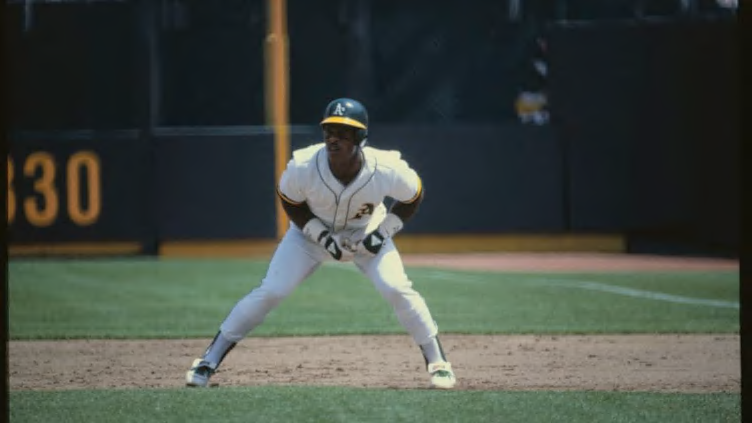
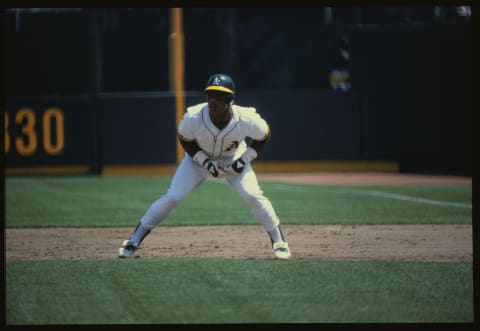
Continuing our series on MLB History, today we look at the Best All-Time Left Fielders in the history of baseball.
Continuing our series on MLB History, today we look at the Best All-Time Left Fielders in the history of baseball.
Our series with the top players at each position in MLB history continues today with left fielders. Recently, we examined the top left-handed pitchers. We’ve also revealed the top right-handed pitchers, catchers, first basemen, second basemen, third basemen and shortstops in baseball
Unlike some of the more defense-oriented positions, like catcher and shortstop, to be one of the all-time greats in left field, you have to be able to hit. Every left fielder on this list was at least 19 percent better than average on offense after league and ballpark effects were considered (119 wRC+ or better).
They aren’t all home run hitters, though. The greatest base stealer in the history of the game is on this list, as is the second greatest base stealer in history. That’s not to say power hitters are neglected. Five of these guys hit 400 or more home runs, and seven had 1500 or more RBI.
Many of these left fielders are in the Hall of Fame. That’s where the greatest belong, of course, but there are a few who would be in the Hall based on their on-field performance, but off-field issues have kept them out so far. There are also a few who have support for the Hall of Fame but are still on the outside looking in.
Unlike the top third basemen list, there are no active left fielders here. The best active left fielders are Ryan Braun, Justin Upton, and Brett Gardner. They might be in the conversation for top 50 left fielders of all-time but didn’t make the top 20.
For this list, two versions of Wins Above Replacement (WAR) were used, those from and Baseball-Reference, along with Wins Above Average (WAA). Wins Above Average gives more credit to outstanding seasons. I believe it’s an excellent metric to use when looking at all-time greats. Jay Jaffe’s JAWS list was also part of the discussion.
In the end, 20 men made the cut and their careers span more than a century of baseball. Let’s look at the 20 best All-Time Left Fielders in MLB history.
Best All-Time left fielders. Ralph Kiner (#20)
“I think one of the most difficult things for anyone who’s played baseball is to accept the fact that maybe the players today are playing just as well as ever.”—Ralph Kiner
Many baseball plans knew Ralph Kiner as the longtime announcer for the New York Mets. He was particularly well known for some of the funny things he said on air, like, “Solo homers usually come with no one on base” and “All the Mets’ road wins against Los Angeles this year have been at Dodger Stadium.”
Long before he entered the broadcast booth, Kiner was one of the most prolific sluggers in baseball in the late 1940s and early 1950s. He grew up in Alhambra, California, where he was able to play baseball year round in beautiful weather. Shortly after graduating from high school, he signed with the Pittsburgh Pirates.
Kiner played three minor league seasons before serving in the military during World War II. He returned to baseball in 1946 and immediately led the National League in home runs.
He also led the league in strikeouts, with 109, but would cut down on his strikeouts over the rest of his career. When he retired, he had 262 more walks than strikeouts in his career.
After leading the league with just 23 home runs in 1946, Kiner exploded for 51 homers in 1947, again leading the league. This would be a regular occurrence. Kiner led the NL in home runs in each of his first seven major league seasons. Twice he hit more than 50 and five times he hit more than 40.
He wasn’t just a home run hitter, though. He also had six straight seasons with 100 or more walks and finished his career with a .398 OBP and .548 slugging percentage.
He led the league in on-base percentage once and slugging percentage three times. Despite playing on terrible Pittsburgh Pirates teams, Kiner finished in the top 10 in NL MVP voting four times.
Off the field, Kiner lived at home with his mother during his first few major league seasons, but would soon build a house of his own in Palm Springs, California. The city was becoming a hotbed for golf and tennis among the Hollywood crowd.
Kiner lived near Frank Sinatra and Lucille Ball. He dated beautiful movie stars before marrying one of the top tennis players in the country, Nancy Chaffee.
In 1950, the Pirates brought on Branch Rickey to be their general manager. Rickey was not a big Ralph Kiner fan. He didn’t think Kiner deserved the salary he made, so he worked behind the scenes to get the Pirates owner, John Galbreath, to trade Kiner. He was successful. Kiner was dealt to the Cubs in the middle of the 1953 season.
Kiner’s 1953 season was still good despite the mid-season trade. He finished with 35 home runs and 116 RBI and was nearly a 3 WAR player. That was a significant drop from his peak, though, when he had three 8 WAR seasons in five years from 1947 to 1951.
Kiner followed up his 1953 season with a 2.9 WAR season in 1954, but his home run total dropped to 22, the lowest of his career. The Cubs traded him to Cleveland after the season and Kiner played one last year in the big leagues. He was still an above-average hitter, but only played 113 games and was terrible defensively.
Despite his short career (just 10 seasons), Kiner made the Baseball Hall of Fame in 1975, his 15th year on the ballot. He only hit 369 career home runs, but his rate of one home run every 17 plate appearances is eighth-best among hitters with 300 or more home runs in their career.
Best All-Time left fielders Jose Cruz (#19)
“A Puerto Rican legend whose brilliance equals that of the stars.”—Honduran Sportswriter Greg Moraga, about Jose Cruz.
Jose Cruz was the face of the Houston Astros in the 1970s and early 1980s. From 1975 to 1986, Cruz hit .295/.362/.431 and averaged 4.2 WAR per season. He patrolled left field with style and flair in the Houston Astrodome and ranked as one of the best defensive left fielders on this all-time list. He had three 8 WAR seasons in five years from 1947 to 1951.
At the plate, he had a distinctive leg kick that produced line drives in the gaps. He was never a big home run hitter, topping out with a career-high of 17 in 1977, but he also played in a ballpark that wasn’t home run friendly (the Astrodome). He stole 317 bases in his career, including 30 or more four straight years from 1977 to 1980.
When the Astros made the playoffs for the first time in 1980, Cruz was a wrecking force in the series, hitting .400/.609/.600. Four of the five games went extra innings. Cruz was intentionally walked three teams in Game Three. The deciding fifth game went extra innings, with the Phillies winning and advancing to the World Series.
The Astros made the playoffs twice more in his career, but couldn’t get past the NLDS in 1981 (strike season) or NLCS in 1986. The 1986 NLCS loss to the New York Mets was another heartbreaking series, similar to 1980.
The Astros lost the final two games in extra innings. Game Five went 12 innings, and Game 6 went 16 innings.
Cruz played his final season with the Astros in 1987, then played a partial season with the Yankees in 1988. Before coming to Houston, he’d played five years with the St. Louis Cardinals. Overall, he spent 19 years in the major leagues and had over 2200 career hits and more than a thousand runs scored and RBI.
The Astros retired his jersey number 25 in 1992. In 1999, he was selected to be one of three outfielders on the All-Astrodome team. Four years later, he was inducted into the Texas Baseball Hall of Fame. In 2006, he coached for the Puerto Rico team in the 2006 World Baseball Classic under manager Jose Oquendo. His son, Jose Cruz, Jr. was on the team.
Best All-Time Left Fielders MLB History Minnie Minoso (#18)
“I know that baseball fans have me in their own Hall of Fame—the one in their hearts. That matters more to me than any official recognition. If it’s meant to be, it’s meant to be, and I am truly honored to be considered. I’ve given my life to baseball, and the game has given me so much.”—Minnie Minoso
As a young man growing up in Cuba, Minnie Minoso’s whole life was baseball. He played in the sandlots, played for a company team, in semipro leagues and winter leagues. In 1946, he signed a deal to play in the Negro National League with the New York Cubans. This was one year before Jackie Robinson broke the modern color barrier in Major League Baseball. Minoso was a dark-skinned Cuba, effectively shutting him off from MLB because of the unspoken ban on non-white players.
Jackie Robinson broke through in the major leagues in 1947, with Larry Doby making his debut a few months later. Minnie Minoso got his chance in 1949, joining Doby in Cleveland.
He only played in nine games that year but would be back in the big leagues with Cleveland in 1951 for the first month of the season. That year, he was part of a three-team trade at the end of April and landed in Chicago with the White Sox.
Minoso had his first all-star season in 1952 when he led the AL in steals. He led the league in steals again the following year, another all-star season, and finished fourth in AL MVP voting. In 1954, he made it three all-star seasons in a row, this time leading the league in triples and total bases.
White Sox fans loved Minoso’s enthusiasm and hustle. He was an expert at taking a pitch, regularly getting hit 15-20 times per season. He led the league getting beaned 10 times in 11 seasons from 1951 to 1961. This contributed to his .389 career OBP.
He was also a daring base stealer, which wasn’t always a good thing. He led the league in caught stealing six times.
After six seasons in Chicago, Minoso played two seasons with Cleveland before returning to the White Sox in 1960. Unfortunately, he missed out on being part of the 1959 “Go Go” White Sox. He would have been a nice fit with that team.
Minoso’s last good season was 1961. He played two part-time years with the Cardinals and Senators and had a 30-game stint with the White Sox (again) in 1964.
In 1976, at the age of 50, he appeared in three games with the encouragement of White Sox owner Bill Veeck so he could say he’d played in four different decades. He made it five different decades when he got into two games in 1980, at the age of 54.
Thirteen years later, the 68-year-old Minoso signed a contract with the independent league St. Paul Saints and grounded out in one at-bat. In 2003, now 78 years old, he once again pinch-hit for the Saints. He drew a walk and could forever say he played professionally in seven different decades.
Minoso was a favorite around Chicago long after his career ended. The White Sox retired his number nine in 1983 and a statue was erected outside U.S. Cellular Field.
The one thing that he never received was a call from the Hall of Fame. He peaked with 21.1 percent of the vote during his 15 years on the BBWAA ballot and hasn’t made it in through any Veterans Committees.
Best All-Time Left Fielders Joe Medwick (#17)
“We have a lot in common. I also used to be a Cardinal.”—Ducky Medwick, when he was introduced to Pope Pius XII
Many baseball fans know Joe Medwick only as Ducky Medwick. It’s rumored that he got the nickname because he walked like a duck. He wasn’t happy about the nickname but sportswriters picked up on it and he was mostly known as Ducky during his career.
Medwick came up with the St. Louis Cardinals as a 20-year-old in 1932 and would be a key part of their Gashouse Gang World Series-winning team in 1934. That 1934 season was his first of 10 all-star years. His best season was 1937 when he hit .374/.414/.641 and won the NL MVP Award.
That was a dominant season for Medwick. He led the NL in almost every offensive category, including runs, hits, doubles, home runs, RBI, batting average, and slugging percentage. By leading the league in batting average, home runs, and RBI, he won the Triple Crown. No NL player has repeated that accomplishment in the 81 years since.
After being worth 7.1 WAR the previous year, Medwick was worth 8.5 WAR in his Triple Crown year. This was peak Joe Medwick. He could hit for average, hit for power, score runs and drive in runs.
He continued to be a strong player over the next few seasons but was more in the 4 to 5 WAR range than 7 to 8 WAR.
After nine seasons in St. Louis, Medwick was traded to the Brooklyn Dodgers during the 1940 season. The Cardinals, with Sam Breadon as owner and Branch Ricky as general manager, were notorious for their penny-pinching ways. As part of the trade, the team received a large sum of money, reportedly over $100,000.
Medwick was 29 years old the year he was traded to the Cardinals. At the end of the season, he had 47 WAR in his career.
Over the next seven years, playing for three different teams, he had just two above-average seasons and a total of 8.6 WAR. He still hit for a good average during his decline phase, but didn’t get on base as much and didn’t hit for much power.
It took 20 years for Medwick to make the Baseball Hall of Fame. He first appeared on the BBWAA ballot in 1948, then not again until 1956. He finally got the call in 1968. In 2014, he was one of 22 former players and personnel to be in the inaugural class of the St. Louis Cardinals Hall of Fame Museum.
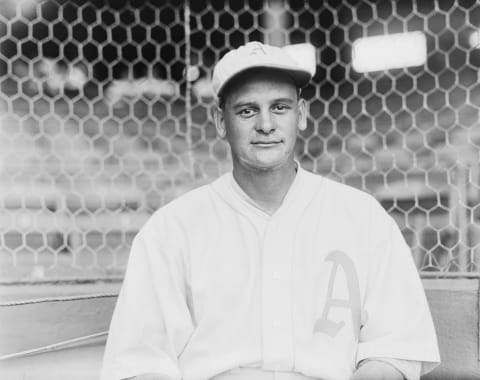
Best All-Time Left fielders Bob Johnson (#16)
“Indian Bob Johnson never had one of those super seasons that make everyone sit up and whistle. While phenoms came, collected their MVP trophies, and faded, he just kept plodding along hitting .300, with a couple dozen homers and a hundred ribbies year after year. Like a guy punching a time clock.”—author Bob Carroll on Bob Johnson
One way you know Bob Johnson played many decades ago is because his nickname was “Indian Bob.” He got the nickname because he was one-quarter Cherokee, but it probably wouldn’t fly these days. Johnson was born in Oklahoma on an Indian reservation but grew up in Tacoma, Washington.
His growing up years are somewhat mysterious. He claimed he didn’t go to school beyond fifth grade and it’s possible he ran away from home when he was 13 and ended up in Southern California. In California, Johnson and his brother Roy found a home on the baseball diamonds. Roy was older, but Bob was not shy about saying he was better at baseball than Roy.
He once said, “By all the gods of the Cherokee, if Brother Roy can get away with it in the big leagues, so can I.”
From 1929 to 1932, Bob Johnson spent four years in the minor leagues, the last three with Portland in the Pacific Coast League. He finally got his chance in the big leagues in 1933, with the Philadelphia Athletics, at the age of 27. Despite the late start, he hit the ground running. He played 13 years in the major leagues and never had fewer than 3.1 WAR in a season.
An average season for Bob Johnson was impressive: 143 G, 95 R, 158 H, 22 HR, 99 RBI, 7 SB, and a .296/.393/.506 triple-slash mark. His career wRC+ was 133, meaning he was 33 percent above average on offense after league and ballpark effects were taken into account.
It’s true that he never led the league in any major category except for on-base percentage (once) but he did have eight seasons with 100 RBI, including seven in a row from 1935 to 1941.
He never hit more than 35 home runs but hit 21 to 34 home runs nine times. He hit over .300 five times and between .290 and .300 four times. He was also terrific at getting on base and hitting for power.
That was the thing about Bob Johnson. He never had a bad year. He was worth 3.8 WAR in his rookie season, 3.7 WAR in his fourth season, 3.7 WAR in his eighth season, and 3.1 WAR in his 13th season. In his best year, he was worth 6.5 WAR. In his worst year, he was worth 3.1 WAR, which is still an above-average season (2 WAR is average).
Johnson was recognized with all-star nods in six of his thirteen seasons. He also received MVP votes six times. Statistically, he was the equal of Hall of Fame left fielders Ralph Kiner and Joe Kelley and better than Hall of Fame left fielders Jim Rice, Heinie Manush, and Lou Brock.
Unfortunately, that didn’t help him much when he appeared on the BBWAA Hall of Fame ballot. He received one vote in 1948 and one vote in 1956.
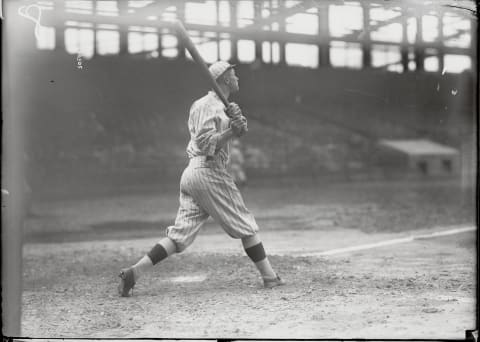
Best All-Time Left fielders Zack Wheat (#15)
“The fellows that I played with encouraged me to bunt and beat the ball out. I was anxious to make good and did as I was told. When I came to Brooklyn, I adopted an altogether different style of hitting. I stood flat-footed at the plate and slugged. That was my natural style.”—Zack Wheat
To put Zack Wheat in historical perspective, he was born in Missouri just six years after Jesse James had been murdered by a member of his gang. It was still a wild frontier and Wheat was part Cherokee. In 1917, Baseball Magazine wrote about this, saying, “The lithe muscles, the panther-like motions of the Indian are his by divine right.”
Wheat’s heritage would come up again when he made it to the big leagues with Brooklyn. One newspaper described Wheat this way: “He is an Indian, but you would hardly guess it except from his dark complexion. He is a very fine fellow and a quiet and refined gentleman.”
In the minor leagues, Wheat was known more for his defense than his bat. As he acknowledged in the quote above, he went away from the bunting and contact style of hitting when he got to Brooklyn. He hit .284/.341/.403 in his first full season, with 36 doubles and 15 triples.
The first dozen years of Wheat’s career came during the Deadball Era and his statistics show how hard it was to hit home runs during that time. He regularly hit more triples than home runs. When the lively ball arrived in 1920, Wheat was already 32 years old but had three seasons with 14 home runs and a career-high 16 home runs in his 30s.
In 1925, Wheat had his last good season. He hit .359/.403/.541, with 125 runs scored, 103 RBI, 42 doubles, 14 triples and 14 home runs. He was 37 years old. Despite having such a good season, the end was near. He played one final season with Brooklyn, then finished out his career with one year in Philadelphia, playing for the Athletics.
At the time he retired, Wheat was 10th on the all-time list for career hits, with 2884. His name can be found all over the leaderboard for the Dodgers, including the top spot in games played, hits, doubles, triples and total bases.
Despite his impressive career, Wheat peaked with 23 percent of the vote on the BBWAA ballot for the Baseball Hall of Fame. He fared better with the Veterans Committee when he was selected for induction in 1959. In 1981, Wheat was one of the players included in the book The 100 Greatest Players of All Time, written by Lawrence Ritter and Donald Honig.

Best All-Time Left Fielders: Willie Stargell (#14)
“I found myself in a race with Mother Nature to play as much baseball as I could before she forced me to stop.”—Willie Stargell
Willie Stargell previously appeared on the list of the top 25 first basemen in MLB History. He also gets a spot here among the top 20 left fielders. In his career, he played more than ten thousand innings at each position.
Left field was Stargell’s primary position for the first dozen years of his career. He came up with the Pirates in 1962 but didn’t play full-time until 1965. From 1966 to 1970, the Pirates’ starting outfield was Willie Stargell in left field, Matty Alou in center field, and the great Roberto Clemente in right field.
Stargell provided the pop, Alou was a good on-base guy who could steal 15-20 bases and Clemente was the all-around superstar.
In 1971, Al Oliver took over in center field, with Stargell and Clemente flanking him in left and right. This was one of Stargell’s best years in the big leagues. He hit .295/.398/.628 and led the league with 48 home runs. Joe Torre and his .363 batting average won the NL MVP Award, with Stargell finishing second.
During this time, Stargell primarily played left field but also spent time at first base almost every year. In 1972, he was the primary first baseman for one year, then went back to left field in 1973 and had his best season.
He hit .299/.392/.646 and led the league in doubles, home runs, RBI, and slugging percentage. Once again, he finished second in MVP voting, this time losing the award to Pete Rose.
In 1974, the 34-year-old Stargell played his final season as the Pirates’ starting left fielder. He hit .301/.407/.537, but saw his home run and RBI totals drop from 44 and 119 to 25 and 96. The next season, he was moved to first base, which is where he played the rest of his career.
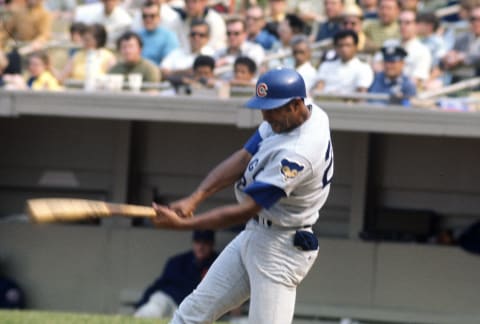
Best All-Time Left Fielders Billy Williams (#13)
“When they told me there would be a statue erected at Wrigley Field, I was happy with that. I know there will be a meeting place for a lot of people. There will be a conversation every day. They say now, ‘I’ll meet you at Ernie Banks’ statue.’ After September 7, they’ll say, ‘I’ll meet you by Billy Williams’ statue.’”—Billy Williams
Billy Williams grew up in the Deep South, which wasn’t easy for an African-American in the 1940s and 1950s. During his teenage years, he played on a team called the Mobile Black Bears. His high school didn’t have a baseball team, but he played basketball, football and ran track.
Before graduating from high school, Williams was noticed by a Chicago Cubs scout named Ivy Griffin. Williams signed with the Cubs and entered professional baseball in 1956 at the age of 18. Three years later, he got a taste of major league play during an 18-game stint in 1959. He had another 12-game stint in 1960, then became a full-time player in 1961.
Williams hit .278/.338/.484 in his first full season, which was good enough to win the NL Rookie of the Year Award. He followed that up with an all-star season in 1962, then began a stretch of very good seasons during which he rarely missed a game.
From 1962 to 1973, Williams hit .299/.366/.508 while averaging 98 runs, 29 homers, and 99 RBI per season. He averaged 160 games played and had a stretch of seven seasons during which he never missed a game. His consecutive game streak of 1117 games is sixth-most all-time.
The left-handed hitting Williams was known for his picturesque swing. Ron Santo described it as “probably one of the shortest swings in baseball, and one of the prettiest.” The guy ranked just after Billy Williams on this list, Willie Stargell, said Williams was the best left-handed hitter he ever saw and described his swing as “poetry in motion.”
After 16 years with the Chicago Cubs, Williams was traded to the Oakland Athletics prior to the 1975 season. He played two seasons with Oakland as their designated hitter. After his playing career was over, he was a coach with the Cubs, A’s and Indians for many years. In 1987, he was inducted into the Baseball Hall of Fame.

Best All-Time Left Fielders Sherry Magee (#12)
“To my mind Sherwood Magee is one of the best all-around players the game has ever seen.”—Cincinnati reporter
Sherry Magee’s entry into professional baseball sounds like something out of a movie about baseball in the early 1900s. According to this SABR piece, Magee was discovered by a Phillies scout who overheard some locals in Carlisle, Pennsylvania, talking about a great ballplayer in the area.
The scout, Jim Randall, thought enough of Magee to offer him a contract. The next day, the 19-year-old Magee was playing for the Phillies.
With a .277/.308/.409 batting line (117 wRC+), Magee was already an above average hitter right from the start of his big league career, but that was just the beginning. Over the next 11 years, Magee hit .299/.372/.444 and averaged 84 runs scored and 36 stolen bases per year. He was worth an average of 4.7 WAR per season and had two seasons worth nearly 7 WAR.
In 1910, Magee led the league in all three rate stats, hitting .331/.445/.507. He also led the league in runs and RBI. There wasn’t an MVP Award in those days, but if there had been Magee should have won it.
Magee was a great player, but he also had a mean streak that earned him a reputation. In 1908, the Philadelphia Times wrote, “That he is one of the most hot-headed players in either big league is admitted; it couldn’t be denied, because the records, showing how often he has been suspended for scrapping with the umpires, speak for themselves.”
In 1911, Magee’s temper got him suspended. He was called out on strikes by umpire Bill Finneran. After the third strike, Magee tossed his bat in the air and Finneran ejected him. Magee turned and slugged Finneran in the jaw.
He was initially suspended for the rest of the season, but NL President Thomas Lynch rescinded the suspension in mid-August. Magee still missed nearly five weeks of the season.
After 11 years with the Phillies, Magee was traded to the Boston Braves before the 1915 season. He broke his collarbone in spring training but still played a full season, hitting .280 with a .350 OBP.
The injury likely sapped his power, though, as he slugged just .392 after slugging .509 the previous season. He was even worse in 1916 (.241/.322/.327).
The 1917 season was a rough one early on for Magee. He hit poorly enough to be released by the Braves, but when the Cincinnati claimed him off waivers, he had new life. Over the last 45 games of the season, he hit .321/.400/.438 with the Reds. He followed that up with another good year in 1918 when he led the league with 76 RBI.
Magee’s final year in the major leagues was 1919. He finally played on a pennant-winning team, as the Reds won the NL pennant and the World Series over the Chicago “Black Sox” (the team that threw the World Series). Magee, at 34 years old, had his worst season.
He only played in 56 games and hit .215/.337/.264. It was the only season of his career that he was below average on offense.
Even though his major league career was over, Magee wasn’t done playing baseball. He spent the next seven years playing for minor league teams all around the country and regularly hit well over .300 with good power.
In an interesting twist, when he finally hung up his spikes as a player, Magee became an umpire. The longtime hothead was an umpire in the NL for one year and received good marks for his “cool decisions on the field.” Sadly, that offseason, Magee suffered from pneumonia that led to his death in March of 1929.
Among these 20 players, Magee ranks 12th in Fangraphs WAR, 14th in Baseball-Reference WAR, 10th in Wins Above Average, and 13th in Jay Jaffe’s JAWS. Despite these rankings, he never got much support in Hall of Fame voting by the BBWAA. In 2008, he was one of ten pre-1943 players considered by the Veterans Committee but didn’t make the cut.
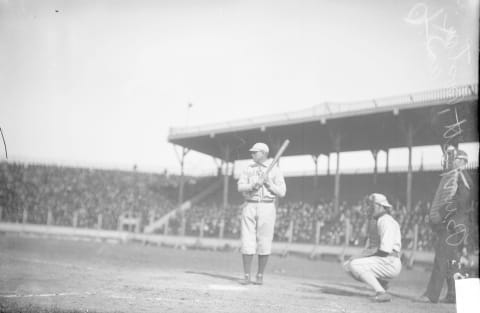
Best All-Time Left Fielders Jesse Burkett (#11)
“Even when he was hitting .400, he played with a perpetual scowl.”—A contemporary writer, describing Jesse Burkett
Jesse Burkett was an impressive hitter who led the league in hits and batting average three times in a seven-year span from 1895 to 1901. Twice he hit over .400 and once he finished at .396. His career average is .338 and he had a .415 career on-base percentage.
As good as he was on the field, Burkett was reportedly not a pleasant man off the field. According to this SABR biography, Burkett “was cranky and unsociable, prone to challenging opponents with his fists and insulting fans and umpires with strings of expletives so creative that sportswriters of the day could only reprint his repartee by omitting all the bad language, which usually made his harangues incomprehensible.”
Perhaps Burkett’s personality was one reason he played for five different teams in his 16-year career.
Burkett was originally acquired by the Indianapolis Hoosiers of the National League, but he never played a game for the franchise because it folded not long after he was brought on board. The New York Giants grabbed him and he hit .309/.366/.461 in his first big league season.
The Giants were a talented club and Burkett didn’t make the cut the next season. He ended up with the Cleveland Spiders. After two seasons hitting below .300, Burkett bumped his average to .348 in 1893 and was regularly well over .300 with on-base percentages over .400 for the next eight years.
The Cleveland Spiders team had a bad reputation for being unruly and Burkett, nicknamed “The Crab,” was one of the nastiest. He was once ejected from both games of a doubleheader. After his ejection in the second game, he was forcibly removed by two policemen.
Burkett missed out on playing for the worst team in baseball history when he and the other good players on the 1898 Cleveland Spiders were transferred to the St. Louis Perfectos before the 1899 season. With the players left behind, the Spiders went 26-128. One can only imagine how Burkett would have handled playing on a team that lost that much.
After two seasons with the St. Louis franchise in the National League, Burkett jumped to the St. Louis franchise in the American League in 1902. He had just led the NL in batting average, on-base percentage, hits and runs, but didn’t fare so well in the AL, where his average dropped to .306.
He followed that up with two more sub-.300 seasons with the Browns, then one final year with the Boston Americans.
Burkett didn’t get any traction in Hall of Fame voting but gained entry into the hallowed Hall through the Old Timers Committee in 1946. He wasn’t thrilled that it took so long. His cantankerous streak stayed with him through life after baseball.
In a 1947 article in the New York Herald Tribune, he said of his son, who played in the minor leagues but never got to the bigs, “Curveball pitching is what beat him. They never could get curves past me, but I guess the boy just didn’t have the knack.”
Best All-Time Left Fielders Goose Goslin (#10)
“For the country at large the eagle may remain the national bird, but for the National Capital the greatest bird that flies is the goose.”—Washington Post, about Goose Goslin following the 1924 season
Goose Goslin was just 20 years old when he first played in the major leagues after being signed by the owner of the Washington Senators, Clark Griffith. He only played in 14 games his first year, then 101 in his sophomore season. By his third year, he was a regular in the Senators’ lineup, hitting .300/.347/.453 and leading the AL in triples.
Over the five-year stretch from 1924 to 1928, Goslin hit .348/.413/.544 while averaging 147 games, 194 hits, 99 runs, 115 RBI and 17 steals per season. During this time, he helped the Senators reach the World Series in back-to-back seasons. They beat the New York Giants in seven games in 1924, then lost to the Pittsburgh Pirates in seven games in 1925.
Goslin had his best season in 1928 when he led the AL in hitting. His triple-slash line was an impressive .379/.442/.614 and he was worth 7.5 WAR. This capped a five-year stretch during which he averaged 6.5 WAR per season.
In 1929, Goslin’s average dropped from .379 to .288. When he and the Senators didn’t see eye-to-eye on his salary in 1930, he was traded to the St. Louis Browns in June. He finished out the year with the Browns by hitting 30 home runs in 101 games. His full-season total of 37 big flies was a career high.
Goslin played two-and-a-half seasons with the Browns before returning to the Senators in 1933. This was another World Series year for the franchise but, unfortunately, they lost to the Giants in five games.
Goslin moved to the Detroit Tigers the following season and was part of their back-to-back pennant-winning teams. They lost the 1934 series to the “Gashouse Gang” St. Louis Cardinals, then won the 1935 series against the Chicago Cubs. Goslin had the decisive hit that drove in the winning run.
At 35 years old, Goslin was nearing the end of his career. He had one final good year in 1936 (.315/.403/.526, with 122 runs, 24 homers and 125 RBI) before fading away with a .218/.343/.361 batting line over his final two big league seasons. Thirty years after his playing career ended, he was selected for the Baseball Hall of Fame by a Veterans Committee.
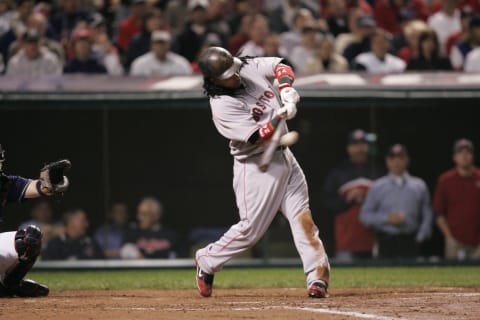
Best All-Time Left Fielders Manny Ramirez (#9)
“I have fun every day. The game is supposed to be fun.”—Manny Ramirez
Manny Ramirez was drafted by Cleveland with the 13th pick of the first round in the 1991 Amateur Draft. He was worth more than all 12 picks ahead of him combined. Other than a 22 game sample in his first year and a 5 game sample in his final year, Ramirez was an above-average hitter throughout his career.
In the strike-shortened 1994 season, Ramirez slugged 17 home runs in 91 games and finished second in AL Rookie of the Year voting. The next season, he made the first of 12 all-star teams when he launched 31 homers and had 107 RBI.
He would end up hitting 30 or more home runs 12 times and drive in 100 or more runs 12 times. His 165 RBI in 1999 is the most by any hitter in the last 80 years.
Manny Ramirez could hit like few players ever have. In 19 seasons, he hit .312/.411/.585, with 2574 hits, 1544 runs, 555 home runs, and 1831 RBI. His 153 wRC+ is third-highest among these 20 greatest left fielders of all-time. Only Barry Bonds and Ted Williams were better left fielders offensively than Manny Ramirez.
If hitting were all that mattered Manny would be in the top five on this list. Unfortunately for Manny, playing defense is also part of the game. Manny was really bad defensively, like, epically bad. Based on the Fangraphs defense metric, Manny was the worst left fielder ever, even worse than Adam Dunn.
The career of Manny Ramirez had more than its share of interesting twists. In his first eight years, all with Cleveland, Manny was known as a big kid who could rake like few right-handed hitters before him. He led the league in slugging percentage twice and RBI once and was a big part of the success Cleveland had in the mid-1990s.
Then came the Red Sox years. Manny was just as good a hitter with Boston as he was with Cleveland, but became more well known for the unusual things he did on and off the field.
He was still a big kid, but the spotlight shined brighter in Boston. He was an all-star every season he played with the Red Sox and finished in the top 10 in MVP voting five straight years from 2001 to 2005.
In 2004, when the Red Sox won their first World Series since 1918, Manny led the AL in home runs and slugging percentage. He kept it going in the World Series, where he hit .412/.500/.588 and won MVP honors. He was a big part of their 2007 World Series-winning team also.
Things turned sour for Manny in Boston in 2008. He fought with teammate Kevin Youkilis in the dugout and got into a heated exchange with the team’s traveling secretary that reportedly led to the 64-year-old secretary being shoved to the ground.
He lollygagged to first base on ground balls. Fans and local writers wanted him gone. On July 31, 2008, he was traded to the Los Angeles Dodgers.
Manny was unbelievable with the Dodgers in the last two months of the 2008 season. He hit .396/.489/.743 in 53 games and ended up fourth in NL MVP voting. He hit well again in 2009 but only played 104 games because he was hit with a PED suspension.
He was back with the Dodgers at the beginning of the 2010 season, but injuries cut into his playing time and he was selected off waivers by the White Sox at the end of August.
Manny’s White Sox career lasted just 24 games. He signed a free agent deal with the Tampa Bay Rays. His career as a Ray lasted five games. Once again, it was reported that he had failed a PED test and now faced a 100-game suspension.
He never made it back to major league baseball but did play minor league ball for the Athletics, Rangers, and Cubs, and played with the Kochi Island Fighting Dogs of the Japanese Independent Shikoku Island League.
The legacy of Manny Ramirez is muddled. He was a joy to watch as a hitter, one of the best of his generation. He was also a joy to watch as a fielder, albeit in a much different way. He almost always looked like he was having the time of his life, so he’s an easy guy to like.
At the same time, he had those two PED suspensions and was among the 104 players listed in the Mitchell Report. How much of Manny’s hitting excellence was artificially enhanced? It’s something baseball fans will never know.
Manny Ramirez has been on the BBWAA Hall of Fame ballot twice and received 23.8 and 22.0 percent of the vote. That doesn’t suggest he’ll get close to the 75 percent threshold, but it’s almost double the vote percentage that Rafael Palmeiro ever received and Palmeiro only failed one PED test.
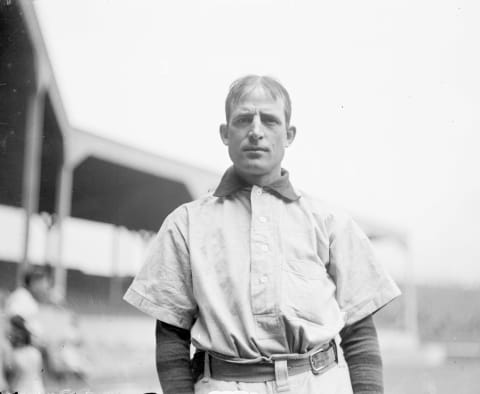
Best All-Time Left Fielders Fred Clarke (#8)
“I attribute my success to fate. … Life is a funny game, and a little thing, almost a trifle, may make a splash in your affairs so big that the ripples from it will be felt as long as you live.”—Fred Clarke
In Fred Clarke’s first major league game, he went 5-for-5, with four singles and a triple. He was 21 years old and playing for the Louisville Colonels in 1894. Despite his auspicious debut, he only hit .274/.337/.420 that year, good for a 79 wRC+, which made him 21 percent below average on offense.
He wouldn’t stay below average for long. Over the next 17 years, Clarke hit .314/.388/.430 with nearly 2600 hits. He played six years with Louisville, but was more famous for his 15 years as a player with the Pittsburgh Pirates, in addition to 16 years as a manager of the team (many of those years overlapped because he was a player/manager).
From 1901 to 1909, Clarke played and managed the Pirates to four NL pennants and one World Series championship. On the field, he was a fast and aggressive baserunner, great with the bat, and impressive in the field. He became known for his intense desire to win, so much so that he was compared to Ty Cobb and John McGraw in an obituary when he died in 1960.
Despite playing more than 100 years ago, Clarke is still on the top 10 in many offensive categories for the Pittsburgh Pirates, including WAR, games played, runs scored, hits and triples. If you include his Louisville numbers, Clarke finished his career with 1622 runs scored, 1015 RBI and 509 steals.
Thirty years after his career ended, Clarke was elected to the Baseball Hall of Fame by the Old-Timers Committee. Six years later, in 1951, he was inducted into the Iowa Sports Hall of Fame as part of its 24-member inaugural class.
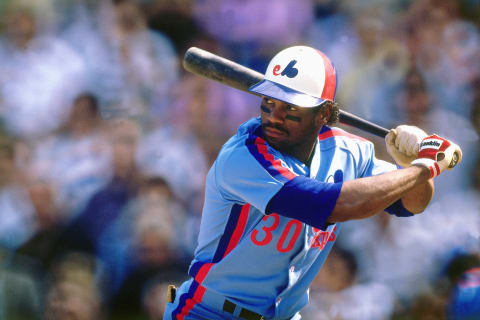
Best All-Time Left Fielders Tim Raines (#7)
“I loved the fans in Montreal. I loved the noise they made at the Big O. The more they cheered the more I wanted to do for them.”—Tim Raines, at his Canadian Baseball Hall of Fame speech
Tim Raines was a standout athlete in baseball, track, and football in high school. On the football field, he averaged 10.5 yards per carry as a running back and ran for over 1000 yards in eight football games.
He set records in track and used his speed to steal home plate ten times in baseball. He turned down numerous college football scholarships and signed with the Expos as a fifth-round pick right out of high school in the 1977 June Draft.
Raines made an impact on the baseball diamond right from the start. He stole 29 bases in 49 games the year he was drafted. He followed that up with 57 steals in A-ball as an 18-year-old, then stole 59 bases in Double-A as a 19-year-old. At the end of that 1979 season, he was used six times as a pinch-runner with the Montreal Expos and had two steals and scored three runs.
In 1980, a 20-year-old Raines played most of the year in Triple-A and had a very impressive .439 OBP along with 77 steals and 105 runs scored in 108 games. He also appeared in another 15 major league games. He was on the cusp of full-time big league action.
It’s a shame that the 1981 season was shortened by the baseball strike. Raines hit .304/.391/.438 in his official rookie year and stole an incredible 71 bases in just 88 games. That had him on pace for 131 steals in 162 games. Rickey Henderson has the single-season record for steals, with 130. Raines finished second in NL Rookie of the Year voting to the amazing Fernando Valenzuela.
Raines led the league in steals the next three seasons also, including a 90-steal season in 1983 when he also led the league in runs scored. Over a 12-year stretch from 1982 to 1993, Raines hit .298/.388/.430 and averaged 95 runs and 56 steals per season. He averaged nearly 5 WAR per season during this time.
These terrific dozen years included the 1987 season in which Raines had to sit out the first month. He was coming off a terrific 1986 season but didn’t receive much in the way of free agent offers.
He eventually re-signed with the Expos but had to sit out until May 2 before he could re-join the team. In his first game back, he was 4-for-5 with a walk, a stolen base and a game-winning grand slam in the tenth inning.
It would eventually come out that MLB teams had colluded to keep down free agent salaries and Raines was one of the best players who was hurt by their actions. Despite the late start to the season, Raines led the league in runs scored and was an all-star for the seventh straight year.
After 12 years with the Expos, Raines moved on to play five years with the White Sox and three with the Yankees before bouncing from the A’s to the Expos to the Orioles to the Marlins over the last few years of his career. He didn’t play as regularly over the last part of his career, but continued to put up high on-base percentages and was an efficient base stealer.
Raines finished his career with 2605 hits and 1330 walks. His combined total of 3935 hits plus walks was four more than Tony Gwynn had in his career. He and Gwynn were nearly equal in career WAR (69.4 for Raines, 69.2 for Gwynn, per Baseball-Reference).
Despite their nearly identical WAR, Gwynn was a first ballot Hall of Famer while it took Raines 10 full years to make the Hall of Fame. He finally got the nod in 2017, along with Jeff Bagwell and Ivan Rodriguez.
Best All-Time Left fielders Al Simmons (#6)
“He had that swagger of confidence, of defiance, when he came up as a kid. He was as sensational a rookie as he was a star. I’ve always classed him next to Ty Cobb (Simmons’ idol) as the greatest player I ever saw. … He was what I would call the ‘perfect player.’”—Ralph “Cy” Perkins, speaking about Simmons at Simmons’ Hall of Fame induction
Al Simmons is famously known for his unusual batting stance that started with his left foot pointed towards third base. As a right-handed hitter, his stance earned him the nickname “Bucketfoot Al.” More recent players with the “in the bucket” baseball stance include Brian Downing and Tony Batista.
Despite his unusual stance, Al Simmons hit .334/.380/.535 in a 20-year career. His 1828 RBI are 20th on the all-time list, right behind Manny Ramirez and ahead of Frank Robinson. Only five left fielders drove in more runs than Simmons.
He played most of his career with the Philadelphia Athletics and was a major part of their dynasty from 1929 to 1931, when they went to the World Series three straight years and won twice.
Those three pennant-winning seasons came in the midst of a 10-year stretch during which Simmons hit .359/.403/.589 and averaged 108 runs scored and 128 RBI per season. He led the AL in hitting in 1930 and 1931 with averages of .381 and .390.
After another good season in 1932, Simmons proved to be too expensive for the Athletics to keep. Connie Mack had one of his patented fire sales and Simmons was one of the players who was shipped out. He ended up playing three years with the Chicago White Sox. The first two were good, but he slumped in 1935 and moved on to Detroit, then Washington.
Thus began the nomadic portion of Simmons career. Over his last nine years in baseball, Simmons played for seven different teams. In 1939, at the age of 37, he made it back to the World Series with the Cincinnati Reds, but they lost in four straight games to the New York Yankees and Simmons only appeared in one of them
Simmons was elected to the Baseball Hall of Fame in 1953 along with Cardinals pitcher Dizzy Dean. He’s also a member of the Wisconsin Athletic Hall of Fame and the National Polish-American Sports Hall of Fame.
Best All-Time Left Fielders Ed Delahanty (#5)
“Baseball for Irish kids was a shortcut to the American dream and to self-indulgent glory and fortune. By the mid-1880s these young Irish men dominated the sport and popularized a style of play that was termed heady, daring, and spontaneous… [Delahanty] personified the flamboyant, exciting spectator-favorite, the Casey-at-the-bat, Irish slugger. The handsome masculine athlete who is expected to live as large as he played.”—Biographer Jerrold Casway
The mysterious death of Ed Delahanty can easily overshadow just how good he was on the baseball diamond. The official story is that Delahanty was kicked off a train for being intoxicated and accidentally fell off a bridge into the Niagara River near Niagara Falls.
It’s possible that it was no accident and Delahanty jumped. This happened 115 years ago, so it’s likely that no one will ever know for sure.
At the time of his death, Delahanty was 35 years old but still a well above average player. Through 42 games of the 1903 season, he was hitting .333/.388/.436, good for 1.3 WAR. This was the culmination of a 12-year stretch from 1892 to 1903 during which Delahanty hit .368/.438/.544 and averaged 110 runs, 105 RBI and 29 steals per season.
In his career, Delahanty led the league in batting average twice, on-base percentage twice, and slugging percentage five times. In his second-to-last season, he led the league in all three. He also led the league in doubles five times, RBI three times, and home runs twice.
He once put on one of the best hitting displays in a single game ever on July 13, 1896. Facing the Chicago Colts, Delahanty went 5-for-5 with four home runs and a single. He scored four times and drove in seven of the Phillies’ eight runs. It was only the second game ever in which a player hit four home runs and it would be another 36 years before another player accomplished the feat.
Delahanty played 13 years with the Phillies and his name is on the top 10 list in numerous categories for position players. He’s third all-time in WAR, behind Mike Schmidt and Chase Utley. He’s in the top 10 in batting average, on-base percentage, and slugging percentage. He’s second to Schmidt in runs scored and RBI.
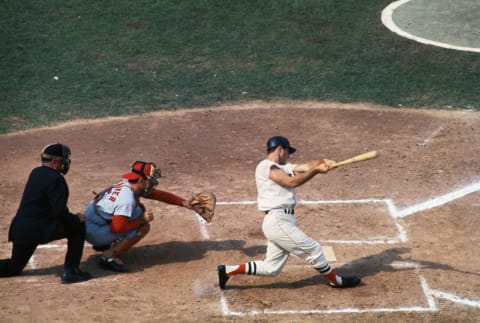
Best All-Time Left Fielders Carl Yastrzemski (#4)
“I think about baseball when I wake up in the morning. I think about it all day and I dream about it all night. The only time I don’t think about it is when I’m playing it.”—Carl Yastrzemski
The Boston Red Sox enjoyed an incredible run of talent at left field for nearly half a century. It started with Ted Williams in 1940. Williams came up to the big leagues in 1939, but played right field his first year. He moved to left in 1940 and held down that spot with excellence until 1960, only missing a few years for World War II and two more during the Korean War.
Carl Yastrzemski showed up in 1961 to take over for Williams. Except for a couple years at other positions, Yaz held that spot until 1972. Tommy Harper played left for two seasons in the early 1970s, then it was Jim Rice in front of the Green Monster for a dozen years.
For the most part, it was Williams, Yaz, and Rice in left field in Boston from 1940 to 1987. All three are in the Hall of Fame.
Taking over for Ted Williams in 1961 wasn’t easy for Yastrzemski and the young left fielder struggled, hitting .266/.324/.396 (87 wRC+). He found his footing in his second year and began a long stretch of impressive hitting. From 1962 to 1977, Yaz played 151 games per year while averaging 89 runs, 22 homers, 85 RBI and a .291/.390/.478 batting line.
In his career, he was an all-star 18 times, won seven Gold Glove Awards and received MVP votes in 14 seasons. He was a fixture on the Red Sox, the face of the franchise after Williams retired. Three times he led the AL in hitting, five times he led in on-base percentage and three times in slugging percentage.
The 1967 season by Yastrzemski is one of the best seasons anyone has ever had. He led the league in all three rate stat categories, as well as runs, hits, home runs, and RBI. He’s one of only 15 players to win the Triple Crown since 1901.
Not only are the numbers he put up very impressive, the context of the season added to his excellence. The Red Sox were battling for a pennant with the Minnesota Twins, Detroit Tigers, and Chicago White Sox. As they bounced between first, second and third place during September, Yastrzemski practically carried the team on his back, hitting .417/.504/.760 with 22 runs scored and 26 RBI in 27 September games.
He was even better over the last two weeks, hitting .523/.604/.955 with 14 runs scored and 16 RBI in 12 games. In must-win games against the Minnesota Twins to end the regular season, he was 3-for-4 with four RBI in the penultimate game of the season and 4-for-4 with two RBI in the final game. The Red Sox won the AL pennant by a single game over the Twins and Tigers.
He kept it up in the World Series against the St. Louis Cardinals, hitting .400/.500/.840. Unfortunately for Boston fans, the Red Sox fell to the Cardinals in seven games. They couldn’t overcome the incredible Bob Gibson, who started and won Games 1, 4 and 7 with three complete games and a 1.00 ERA.
That 1967 season was the best season of Yaz’s career, but he followed it up with an impressive encore. In 1968, he led the league in batting average, on-base percentage, and walks. He finished ninth in MVP voting despite having the highest WAR in the league by more than two wins (Baseball-Reference).
Like most players, Yastrzemski was at his best before the age of 30. He was no slouch after 30, though, as he continued to be a 3 to 5 WAR player into his late 30s. He finished his career with 3,419 hits, 452 home runs, and 1844 RBI. He was elected to the Baseball Hall of Fame in 1989, his first year of eligibility. The Red Sox retired his number eight that same year.
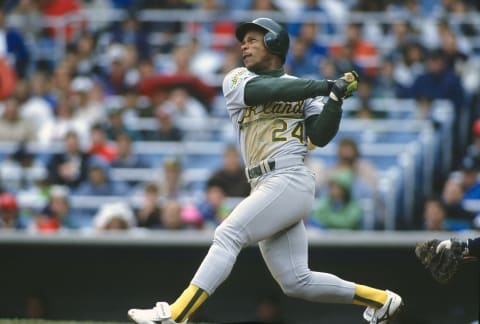
Best All-Time Left Fielders Rickey Henderson (#3)
“Rickey got a big ranch. Rickey got a big bull. Rickey got horses. Rickey got chickens and everything. And Rickey got a 20-gallon hat.”—Rickey Henderson “I like playing for Oakland, they have a very colorful uniform.”—Rickey Henderson
For a generation of baseball fans growing up in the 1980s, Rickey Henderson was basically the coolest person ever. His stance was cool. His look was cool. His way of referring to himself in the third person was cool.
Watching Rickey Henderson lash a line drive into left field from his crouched batting stance was cool. Then he’d get on first with those muscular thighs and you knew he would steal second and it would be cool.
Growing up in Oakland, Rickey Henderson was a standout at baseball, basketball, and football in high school. Fellow MLB outfielder Dave Henderson once said, “Ronnie Lott, Rickey, and myself were among the top high school players in the country our senior year.” Lott went on to play in the NFL, while Rickey and Dave Henderson were teammates with Oakland later in life.
Rickey Henderson could have gone to college on a football scholarship but his mother chose baseball for him. She didn’t want him to get hurt. The Oakland A’s drafted him with the final pick of the fourth round of the 1976 June Draft.
He was very good right from the beginning. In his first taste of professional baseball, at the age of 17 in Low-A, he hit .336/.463/.521 and stole 29 bases in 46 games.
Henderson followed that up with 95 steals in 134 games in A-Ball, then 81 steals in 133 games in AA. He started the 1979 season in Triple-A. After hitting .309/.430/.448 with 44 steals in 71 games, he was in the big leagues, where he hit .274/.338/.336 and stole 33 bases in 89 games at the age of 20.
Oakland was a terrible team in Rickey’s rookie year, but their fortunes would change when Billy Martin was brought in to manage the team. The team played “Billy Ball,” which was an aggressive style of play that took advantage of Rickey’s talents on the bases (Martin also destroyed some pitchers’ arms along the way, but that’s another story).
In his three years playing for Martin, Henderson stole 286 bases in 415 games. This included his record-setting 130 steals in 1982, which easily broke Lou Brock’s single-season record of 118. Henderson led the league in steals 12 times, including nine times in 10 years in the 1980s.
The one year he didn’t lead the league in steals was during an injured 1987 season, when Harold Reynolds led the league. Harold tells this story about Rickey following that year.
After six seasons with Oakland, Rickey was traded to the New York Yankees. He had averaged 7 WAR per year as a regular with Oakland and then averaged 6.8 WAR per year in four full seasons with the Yankees. In June of 1989, the Yankees traded Henderson back to Oakland for Luis Polonia, Eric Plunk, and Greg Cadaret.
Henderson’s second stint in Oakland came during their successful run of seasons from 1988 to 1992. After the 1989 trade, Henderson was part of their World Series championship team, then won the AL MVP Award in 1990 when he led the league in on-base percentage, runs scored and steals.
Over the last half of his career, Henderson played for eight different teams. As he aged into his 40s, he slipped into a part-time role but continued to get on base and steal bases regularly. He led the league one last time in steals in 1998, when he was 39 years old. He’s also the only player in baseball history to steal over 100 bases from the age of 40 on.
Even after his MLB career ended during the 2003 season, the 44-year-old Henderson didn’t hang up his spikes. He played the rest of that season and his age-45 season with the Newark Bears in the Independent Atlantic League. In 2005, he played for the San Diego Surf Dawgs in the Independent Golden Baseball League. At 46 years old, he hit .270/.456/.403 and stole 16 bases in 18 attempts.
More than anything, Rickey Henderson loved baseball. What other Hall of Fame player in the modern era would continue his career playing in independent leagues? He had fun playing and we had fun watching. Very cool.
Best All-Time Left Fielders MLB History Ted Williams (#2)
“A man has to have goals—for a day, for a lifetime—and that was mine, to have people say, ‘There goes Ted Williams, the greatest #^amp;!*@ hitter who ever lived.’”—Ted Williams
At 17 years old, even before graduating from high school, Ted Williams played Double-A ball with the San Diego Padres in the Pacific Coast League. Despite being so young, he held his own with a .271 batting average and .383 slugging percentage. He played two more years in the minor leagues, including a Triple Crown season with the Minneapolis Millers in 1938, when he was 19 years old.
In 1939, Williams joined the Red Sox and had one of the best seasons ever for a rookie. He led the league in total bases and RBI and finished four in AL MVP voting. The next season, he led the AL in runs scored and on-base percentage. He also made the first of 19 all-star teams.
These two seasons were good, both worth around 6.5 WAR, which is about what Kris Bryant, Joey Votto, and Charlie Blackmon did last year. Williams was just getting started, though. His next two seasons would be Mike Trout-like.
In 1941 and 1942, Williams led the AL in all three triple-slash categories. Over those two seasons, he averaged .379/.525/.688 (.406 in 1941). He led the league in runs scored, home runs, and base on balls both years.
In 1942, he also led the league in RBI, giving him the Triple Crown. As amazing as he was, he couldn’t get enough votes from the writers to win an MVP Award. He finished second both years.
Williams was destroying American League pitching and just about to enter his age-24 season. Instead, he missed three years fighting in World War II. Who knows what numbers he could have put up had he not missed those three years?
He could have launched another 100 or more home runs to put him in the 600-homer club. He likely would have added a few hundred more runs and RBI and finished over 2000 in both categories in his career.
After WWII, Williams returned to the states and just kept on hitting until he once again missed time for military service, this time in Korea. In his career, Williams led the AL in on-base percentage an amazing 12 times, in slugging percentage nine times, and in batting average six times.
His .482 career on-base percentage is the highest in baseball history. He finally won the MVP Award in 1946, then won it again in 1949. He also finished second four times.
Ted Williams was the perfect mix of artist and scientist at the plate. He had a beautiful swing that produced an optimal launch angle and exit velocity long before anyone was talking about it. He faced the exaggerated shift before it was popular. He not only wouldn’t swing at pitches outside the strike zone, he wouldn’t swing at hard-to-handle pitches inside the strike zone.
It’s hard to say if Williams accomplished his stated goal in that famous quote shown above. In terms of hitting, only Babe Ruth had a higher wRC+, which adjusts for league and ballpark. There’s Ruth at 197, Williams at 188, then Lou Gehrig, Rogers Hornsby and Barry Bonds at 173 (and Mike Trout at 172).
I believe wRC+ is the best metric for judging a player on offense because of the adjustments it makes, so Babe Ruth still holds the top spot. You have to remember, though, that Ruth played a generation before Williams.
Unlike Williams, Ruth never played in official games against African-Americans or dark-skinned Latin America players. Based on the competition he faced, Williams has an argument for the greatest #^#$## player of all-time.
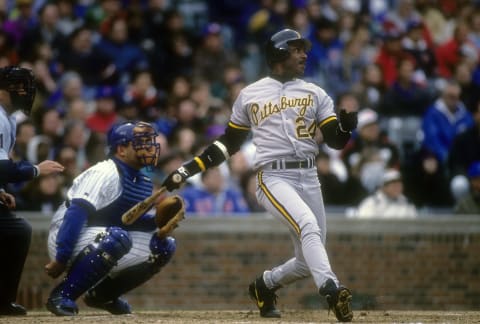
Best All-Time Left Fielders Barry Bonds
“It’s called talent. I just have it. I can’t explain it. You either have it or you don’t.”—Barry Bonds
Barry Bonds played 22 years in the big leagues. If you separate his career into halves, these are his averages per season and his accolades:
First 11 years:
- .288/.404/.548, 144 G 610 PA, 102 R, 30 HR, 90 RBI, 35 SB
- 6 all-star seasons
- 6 Silver Sluggers
- 6 Gold Gloves
- 6 top-five MVP finishes
- 3 MVP Awards
- 7.6 WAR per season
Second 11 years:
- .311/.490/.683, 128 G, 536 PA, 101 R, 39 HR, 91 RBI, 12 SB
- 8 all-star seasons
- 6 Silver Sluggers
- 2 Gold Gloves
- 6 top-five MVP finishes
- 4 MVP Awards
- 7.2 WAR per season
In the first half of his career, Barry Bonds ranked 13th all-time for players through their age-31 season. He was right there with Stan Musial and Eddie Mathews. Over the last half of his career, no player was better than Barry Bonds from the age of 32 on. He tops the list for players 32 and older with 82.7 WAR (Fangraphs). The players behind him are Honus Wagner, Babe Ruth and Willie Mays.
There are many reasons it would be fun to have a time machine (thinking of you, girl with the beautiful brown eyes), but one reason it would be fun to have a time machine is to see where Barry Bonds would have ended up among the all-time greats had he never used PEDs. Maybe I should say “allegedly” used PEDs but that seems a little silly at this point.
From 001 to 2004, Bonds did things none of us have ever seen. He had four straight seasons with 10 or more WAR (Fangraphs).
Sure, Mike Trout had nine or more WAR in four of five seasons from 2012 to 2016, and may top 10 WAR again this year, but he’s done it differently than Bonds.
During that four-year stretch from 2001 to 2004, Bonds averaged .349/.559/.809. It was ridiculous. At this point, he was no longer the good fielder he’d been when he was younger, so his value came primarily from his bat. His wRC+ marks during this time were unreal: 235, 244, 212, 233.
They were Ruthian years, but none of us is old enough to have seen Ruth play. Bonds was our Ruth.
It was an event when he came to the plate. His swing wasn’t as pretty as Ken Griffey, Jr.’s. It was shorter and quicker, without the iconic follow-through. When he stood at the plate, it seemed like there was nowhere the pitcher could throw the ball that Bonds couldn’t drive it into McCovey Cove.
Bonds was intentionally walked 35 times in 2001, 68 times in 2002, 61 times in 2003 and then it got absurd when he received the intentional pass 120 times in 2004. What else could you do? He hit .362 with an .812 slugging percentage.
Only two players in the history of the game have had seasons with an .800 slugging percentage: Barry Bonds and Babe Ruth (who did it three times).
With a time machine, we could see what Bonds would have done without the extra help. Without a time machine, we can only imagine. From 1996 through 1998, when he was 31 to 33 years old, he was still an 8 to 9 WAR player.
That 1998 season was when baseball was dominated by the Mark McGwire/Sammy Sosa home run race that may have inspired Bonds to use PEDs (allegedly). From 1999 on, he was worth 65.3 WAR.
If Bonds had retired after the 1998 season, he would have finished with 99.1 WAR, good for 21st in the history of baseball. Just for fun, let’s say instead of 65.3 WAR from 1999, he’s half as good and earned 33.1 WAR.
Add that to his 99.1 WAR and he would have finished in the 122 WAR range, one spot below Stan Musial at 10th all-time among position players and 12th all-time with pitchers included.
If we want to give him a little more credit and say he would have been two-thirds as good without PEDs, then he would have earned 43.5 WAR from 1999 on and 142.6 over the course of his career. That would put him at number four all-time, behind Babe Ruth, Willie Mays, and Ty Cobb.
Next: Tony Gwynn: Mr. Padre’s legend and legacy
Ultimately, we’ll never know. We do know Barry Bonds was one of the best players ever even before the suspicions of PEDs arose. As a young player, he was a great hitter and fielder and stole 25 or more bases 12 times.
Ultimately, he may belong in the Rickey Henderson or Mickey Mantle wing of the best all-time , rather than the Babe Ruth or Willie Mays wing, but it was still an impressive career nonetheless.